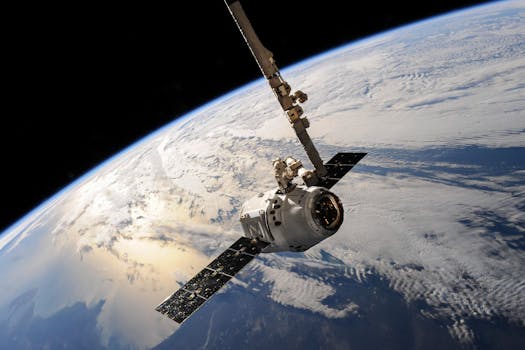The Future of Satellites: Revolutionizing Global Connectivity
The future of satellites is expected to revolutionize global connectivity, enabling faster and more reliable communication services. With advancements in space technology, satellites are becoming increasingly important for various applications, including navigation, remote sensing, and communication.

The Future of Satellites: Revolutionizing Global Connectivity
The future of satellites is expected to revolutionize global connectivity, enabling faster and more reliable communication services. With advancements in space technology, satellites are becoming increasingly important for various applications, including navigation, remote sensing, and communication. The future of satellites is looking bright, with many companies and organizations investing heavily in satellite technology.
Introduction to Satellites
Satellites have been around for several decades, with the first satellite, Sputnik, launched by the Soviet Union in 1957. Since then, thousands of satellites have been launched into space, providing a wide range of services, including television broadcasting, navigation, weather forecasting, and communication. Satellites are essentially objects that orbit the Earth, transmitting and receiving signals to and from the ground. They are used for various purposes, including communication, navigation, remote sensing, and space exploration.
Advancements in Satellite Technology
Recent advancements in satellite technology have made satellites more efficient, reliable, and cost-effective. One of the significant advancements is the development of small satellites, also known as cubesats. These satellites are smaller, lighter, and less expensive than traditional satellites, making them more accessible to companies and organizations. Another advancement is the development of reusable rockets, which has significantly reduced the cost of launching satellites into space.
Additionally, the development of advanced materials and technologies, such as solar panels and fuel cells, has improved the performance and lifespan of satellites. The use of artificial intelligence and machine learning algorithms has also enabled satellites to process and analyze large amounts of data, making them more efficient and effective.
Applications of Satellites
Satellites have a wide range of applications, including communication, navigation, remote sensing, and space exploration. Communication satellites are used for television broadcasting, mobile phone networks, and internet connectivity. Navigation satellites, such as GPS, provide location information and timing signals to GPS receivers on the ground. Remote sensing satellites are used for monitoring the environment, tracking weather patterns, and predicting natural disasters.
Satellites are also used for space exploration, providing valuable information about the universe and the Earth’s place in it. They are used for studying the Earth’s atmosphere, oceans, and land surfaces, as well as for monitoring the effects of climate change. With the increasing demand for satellite services, the future of satellites is expected to be shaped by advancements in technology, changes in market trends, and the development of new applications.
Future of Satellites
The future of satellites is expected to be shaped by several factors, including advancements in technology, changes in market trends, and the development of new applications. One of the significant trends is the increasing demand for satellite-based communication services, particularly in remote and underserved areas. The development of 5G networks and the growing demand for high-speed internet connectivity are also expected to drive the growth of the satellite industry.
Another trend is the increasing use of satellites for Earth observation and remote sensing. With the growing concern about climate change and environmental sustainability, satellites are playing a crucial role in monitoring the Earth’s environment and providing valuable data for scientists and policymakers. The development of new satellite technologies, such as satellite constellations and mega-constellations, is also expected to shape the future of satellites.
In conclusion, the future of satellites is expected to revolutionize global connectivity, enabling faster and more reliable communication services. With advancements in space technology, satellites are becoming increasingly important for various applications, including navigation, remote sensing, and communication. As the demand for satellite services continues to grow, the future of satellites is looking bright, with many companies and organizations investing heavily in satellite technology.